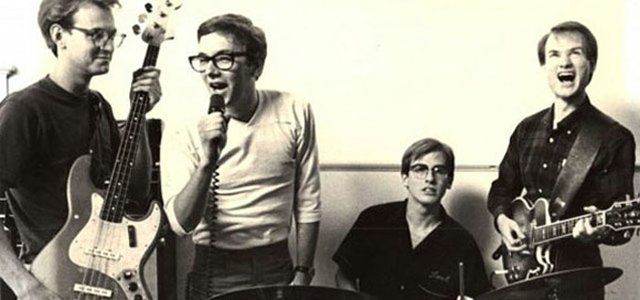The Bally Who?'s New Patience

The indie rock band returns with its own return to the world of Mr. Fox.
The Bally Who? haven’t exhausted themselves, releasing three albums since 2005 including the new A Pilferer’s Patience. Rene and Jacques Duffourc’s occasional releases and performances don’t represent the best strategy for building a career, but I admire anyone who takes to the stage or studio only when really motivated.
Friday afternoon at 2 p.m., they’ll play the theater in the Old U.S. Mint and continue Jacques’ ongoing affair with Roald Dahl’s Fantastic Mr. Fox, which he staged as an interactive puppet show with Arthur Mintz upstairs in the Contemporary Arts Center in 2010. The audience traveled through cardboard tunnels Duffourc and Mintz created to locations from the story, where scenes would be enacted. A Pilferer’s Patience adopts that story to the album format, and while it’s not clear from what in the story and puppet show adaptation fueled their imagination so, the simple fact that they’ve chosen to follow a personal muse to its conclusion speaks to me.
Fortunately, A Pilferer’s Patience is as idiosyncratic as a long-term artistic marriage to a children’s story. The most obvious musical reference point is mid-‘70s Pink Floyd’s prog-folk, as the story is sung with more commitment to enunciation than emotion in minor key melodies set to languorous tempos (think “Shine on You Crazy Diamond”) but The Bally Who? resist the temptation to take songs to big, anthemic places like Pink Floyd. Many songs don’t go to choruses at all, and that refusal preserves an attractive tension—a smart choice for a story about being confined, whether underground or in roles and expectations.
The Duffourcs put enough air and melody in the compositions that they don’t become claustrophobic, and Arthur Mintz’s rolling drums give the tracks movement if not momentum. Only the power pop “The Cannonball Suite” has actual drive, but each musical decision has a clear purpose. Instead of soaring, the songs are often further grounded by fraying bits of noise and saxophone crosstalk. Those touches and the album’s concept itself make another man’s story in another band’s voice seem completely personal.






